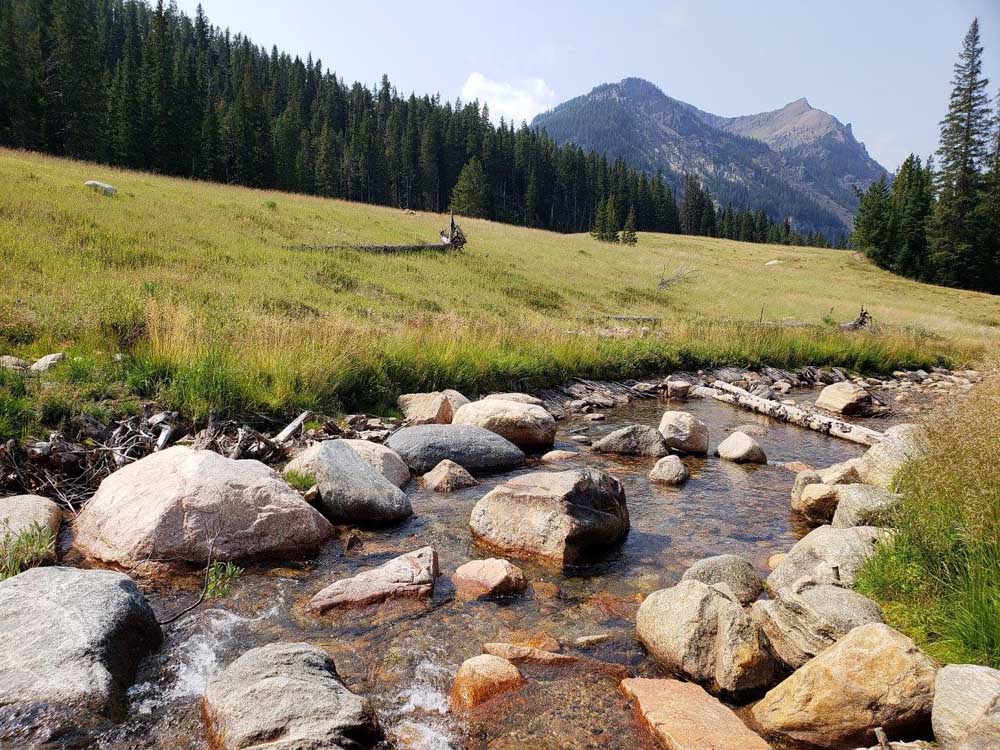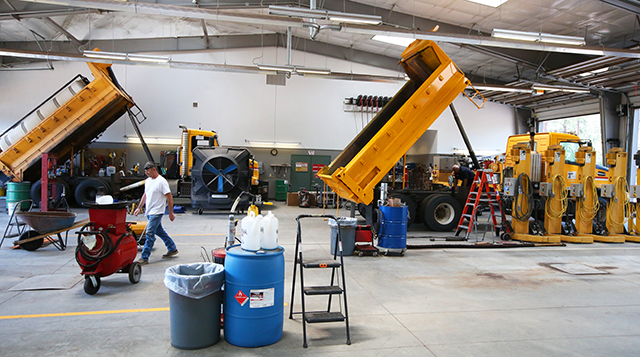Yellowstone creek may no longer be listed as contaminated
Published 12:00 am Thursday, September 20, 2018

- Soda Butte Creek, which flows from the mountains near Cooke City into Yellowstone National Park, will soon be taken off the Montana Department of Environmental Quality’s Impaired Waters List, thanks to reclamation work.(Photo by Tom Henderson, DEQ)
The 1988 fires that scorched Yellowstone National Park also reignited fears of a different kind of environmental disaster, one involving water.
Within the boundary of the 1988 Storm Creek Fire is an old mining district, just outside the town of Cooke City, Montana. More than 80 years of copper, gold and silver extraction in the area left a legacy of toxic runoff into the upper Stillwater River, Clarks Fork of the Yellowstone River and Soda Butte Creek. In addition to the mines, a 10-acre tailings impoundment filled with heavy metals was held behind an earthen dam atop the Soda Butte Creek drainage at the old McLaren Mill site.
Trending
Soda Butte Creek flows southwest into Yellowstone National Park where it is a tributary to the Lamar River. The Lamar, in turn, is an upper tributary to the Yellowstone River. All three streams are prized as trout fisheries. In addition, the Yellowstone provides irrigation and drinking water for thousands of Montanans downstream.
“One of the unexpected outcomes of the 1988 Yellowstone fires is that it motivated the initial steps of the McLaren Tailings cleanup in Cooke City,” Tom Henderson, from the DEQ’s Abandoned Mines Section, wrote in an email. “EPA led emergency response actions to protect the impoundment from flooding following the fires.”
Cleaner water
Thirty years later, after an alphabet soup of federal and state agencies cooperated to clean up the area, the Montana Department of Environmental Quality is close to removing five miles of lower Soda Butte Creek from its Impaired Waters List.
“Soda Butte Creek is now pending a complete delisting of metals impairments, likely the first in Montana history following an abandoned mine cleanup that led to the long-term cleanup,” Henderson wrote.
Prior to the work, which was completed in 2014, the tailings were a continual source of copper, iron, lead and manganese in the stream. The stream, colored orange from oxidized iron, was so toxic that no fish could live in that stretch of water.
Trending
Area environmental groups, such as the Beartooth Alliance, lobbied for a permanent fix to the problems.
“This story is one for the record book on how important grass roots movements are and what they can accomplish,” said Marcia Woolman, a part-time Silver Gate resident and fly-fishing guide, in an email.
Costly work
Such a victory was not cheap or easy.
Before any work began, in 1996 the federal government bought out Crown Butte Mining’s interest in the area’s 200 acres of mine holdings for $65 million. As part of that deal, Crown Butte put $22.5 million in a fund for cleanup of the mine entrances in the New World Mining District, a barren landscape between Henderson and Fisher mountains. The cost to plug just one of the mines was $6 million.
More than $20 million was invested in the mill tailings cleanup alone, funding the DEQ acquired via grants from the Office of Surface Mining. That work required pumping and treating the groundwater onsite so that the 35-foot deep tailings pile could be dug up, treated to reduce its acidity and relocated to a lined pit.
Cleaner water
The results of 20 years of reclamation work is a creek that now meets Montana’s water quality standards for heavy metals.
Prior to the mill site reclamation, DEQ water tests downstream showed only four out of 31 samples complied with the state’s water quality standards. Iron was the major toxin, present in 20 of the 31 samples.
More recent sampling, between June 2015 and 2016, shows that in 10 out of 11 samples Montana’s water quality standards were met, with none exceeding in iron.
Copper and lead levels still remain unresolved in sediments below the McLaren mill site and were “generally higher than at other monitoring locations,” according to a summary of the work co-written by the DEQ’s Henderson.
Further analysis of what’s causing the contamination will continue, but the state has already identified two streams where there wasn’t any mining as natural sources of iron.
New mines
News of the reclamation projects’ success comes as Montana once again wrestles with new hardrock mining proposals. One would remove copper from along a creek that is a tributary to the popular Smith River, near White Sulphur Springs. Another would mine gold and silver from Emigrant Gulch, at the base of the Absaroka Mountains in Paradise Valley.
As with Crown Butte 20 years ago, environmental groups and local residents have banded together in an attempt to stop the projects. Both Montana Sens. Jon Tester and Steve Daines, along with Rep. Greg Gianforte, have agreed that a federal mineral withdrawal in the Paradise Valley is warranted to halt mining on forest lands near Emigrant Gulch. The withdrawal would not affect private mining claims already held in the drainage.
A citizen’s initiative, I-186, is on this fall’s ballot that would require “the Department of Environmental Quality to deny a permit for any new hardrock mines in Montana unless the reclamation plan provides clear and convincing evidence that the mine will not require perpetual treatment of water polluted by acid mine drainage or other contaminants.”
The initiative stems from historic mining in places like Belt, Montana, in the Little Belt Mountains, where old coal mines are a continual source of about 150 gallons per minute of acidic water that could cost a half-million dollars a year to treat. The Mike Horse Mine, in the mountains near Lincoln, Montana, will likely require water treatment in perpetuity, as does the Zortman-Landusky area in the Little Rocky Mountains where gold mining took place.
Mining supporters point to places like the Stillwater Mine, at the base of the Beartooth Mountains near Nye, as proof that modern operations can be environmentally safe even when close to important waterways. The mine has tunnels on both sides of the Stillwater River.
They’ve also pointed to a study by the University of Montana’s Bureau of Business & Economic Research, which found that mining contributes nearly $200 million to the state’s economy each year and employs more than 12,300 workers.
Fisheries improvement
The announcement that Soda Butte Creek is meeting water quality standards comes two years after federal and state agencies also cooperated to remove nonnative brook trout from the stream and restock the waters with native Yellowstone cutthroat trout.
To do that, the agencies poisoned the stream after removing some of the cutthroat trout for reintroduction. In 2016 more cutthroats from adjoining Pebble Creek were captured and planted in Soda Butte to boost the native fish population.
“We’re assuming that project is done,” said Ken Frazer, fisheries manager for Montana Fish, Wildlife and Parks in Billings.
In 2012, Montana Fish, Wildlife & Parks attempted to restore what used to be a cutthroat spawning spring that feeds Soda Butte Creek in the small town of Silver Gate as another way to boost the native fish populations.
None of that fisheries work would have made sense without the cleanup of the abandoned mines and mill sites, although the toxic stretch of water had kept brook trout in the upper creeks from migrating downstream.
“At the end of the day it’s an interesting twist to the story,” Henderson said of the 1988 Yellowstone fires. “The fires really brought people back to the McLaren tailings.
“It’s a happy story when things sort of work out.”








